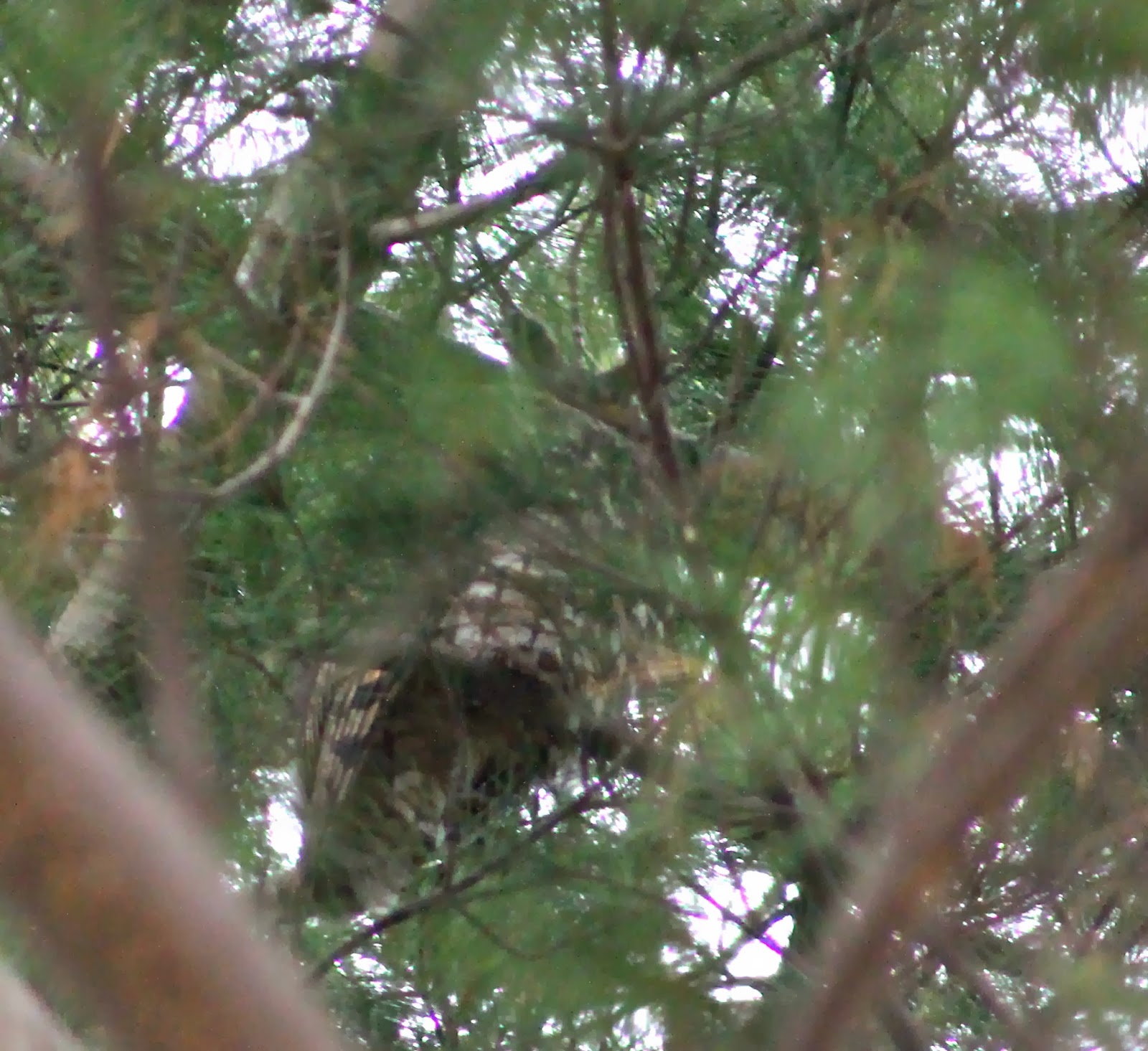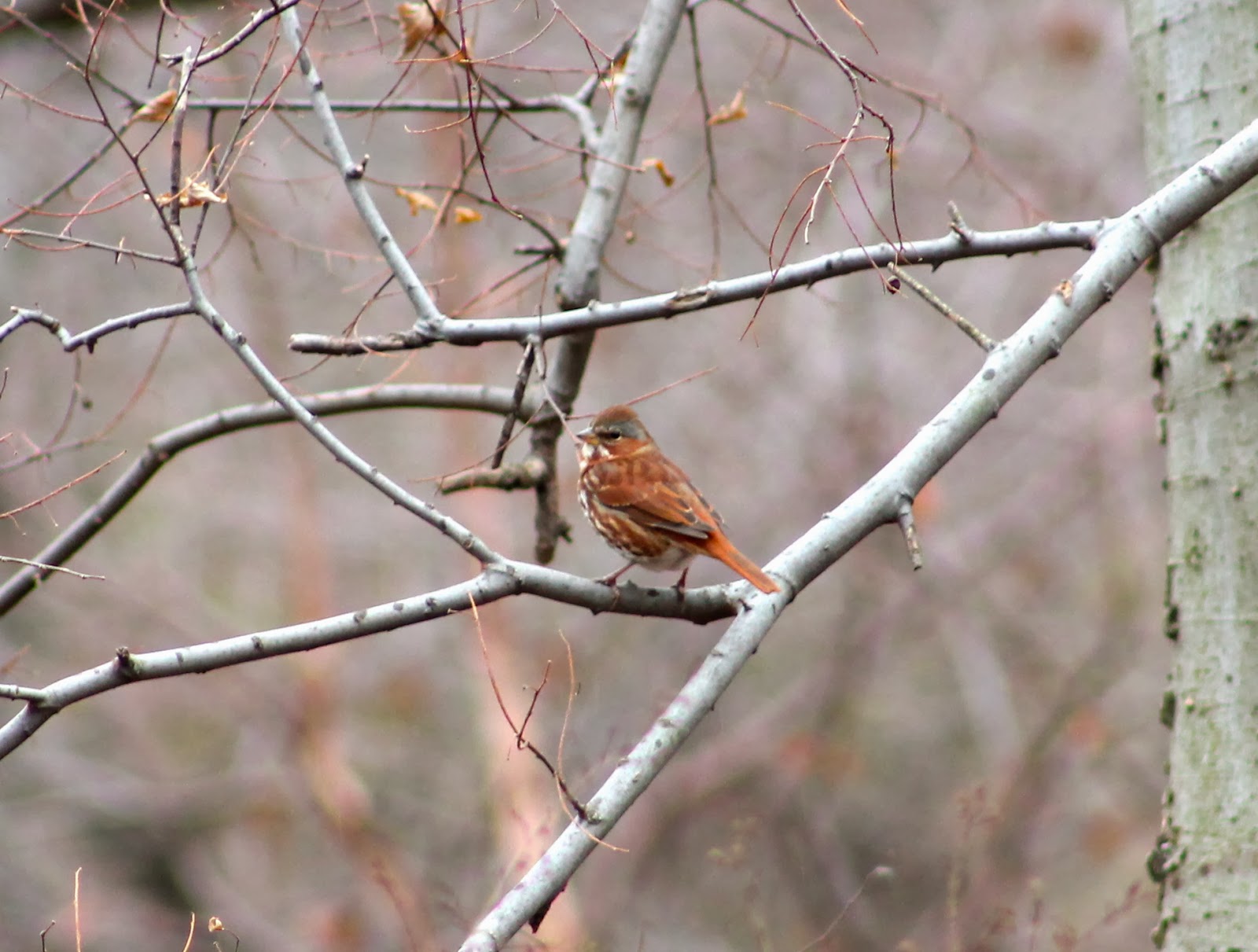 |
| Large flock of Ring-billed gulls on Prospect Park Lake, no Iceland Gulls! |
 |
| Northern Shoveler walking on ice. |
As I sank my teeth into a juicy burger, my phone buzzed with ebird alerts for the area. "What?! Long-eared Owl, 4 reports in Central Park! How did I miss it." I sunk my forehead into my greasy palms; later that evening; I convinced my dad to tag along starting at 6:45 a.m. to hopefully end my "Long" adventure to find the Long-eared owl. Here I am for the second time, frantically scanning every Pine tree in Central Park before hopping on a plane and leaving behind a checkbox blank on my 2013 year list for good.
I suddenly feel my phone moving and answer a call from my dad who had just finished his morning run in the park."The man, Bob, you were going to bird with at 9:30 a.m. is already in the boathouse. He says he knows where the Long-eared Owl is." Once I finished the conversation, I meandered quickly through The Ramble to the boathouse to execute my backup plan: go on a bird walk with "Birding" Bob. "Birding" Bob is a local birder who leads bird walks each week in Central Park. He's been doing this for over twenty years, and has written a lot of research articles on birds of prey in NYC, including studies in Nepal and Thailand. After I ended my jog to the boathouse, I met up with Bob and the rest of the small group for the bird walk. The whole group and I was lead towards a group of Coniferous trees. Bob pointed out how to find owls in general that I thought was helpful:
- Look for "Whitewash", white streaks of owl poop on the trunk(be observant as you walk under the tree, so you don't become like the tree trunk)
- Owl pellets around the base of the tree, small balls of fur with bones from what the owl ate.
- Check the pine trees because Owls like the dense cover in the winter for roosting during the day cover.
 |
| "Birding Bob" |
 |
| A roosting Long-eared Owl, looks more like a giant pine cone. |
 |
| The pine branch obscured his face, but you can still see the two ear tufts on the top of his head. |
I didn't just walk away with just the Long-eared Owl. Towards the end of the walk we were able to catch a great glimpse of a Fox sparrow, a bird I had missed most of the year. I was happy to finally see this species because it is the most colorful of the drab colored sparrows usually seen.
 |
| A Fox Sparrow in its rusty red plumage, a characteristic of the eastern subspecies iliaca. |
You might be asking, why birding in Central Park? It's because of what scientist call "The Central Park Effect"(Birders: The Central Park Effect is a great netflix movie about birding in Central Park). All of NYC is covered in concrete, busy roads, and skyscrapers; not suitable habitat for birds. This leaves the only green areas in the city: Parks. All the birds in the area to funnel into theses green areas like Central and Prospect Park which yields a high concentration of bird species in a restricted area. During Spring and Fall migration, Central Park has the best results due to the migrating warblers that stop over.
 |
| A view of Central Park on the plane ride home. |


No comments:
Post a Comment